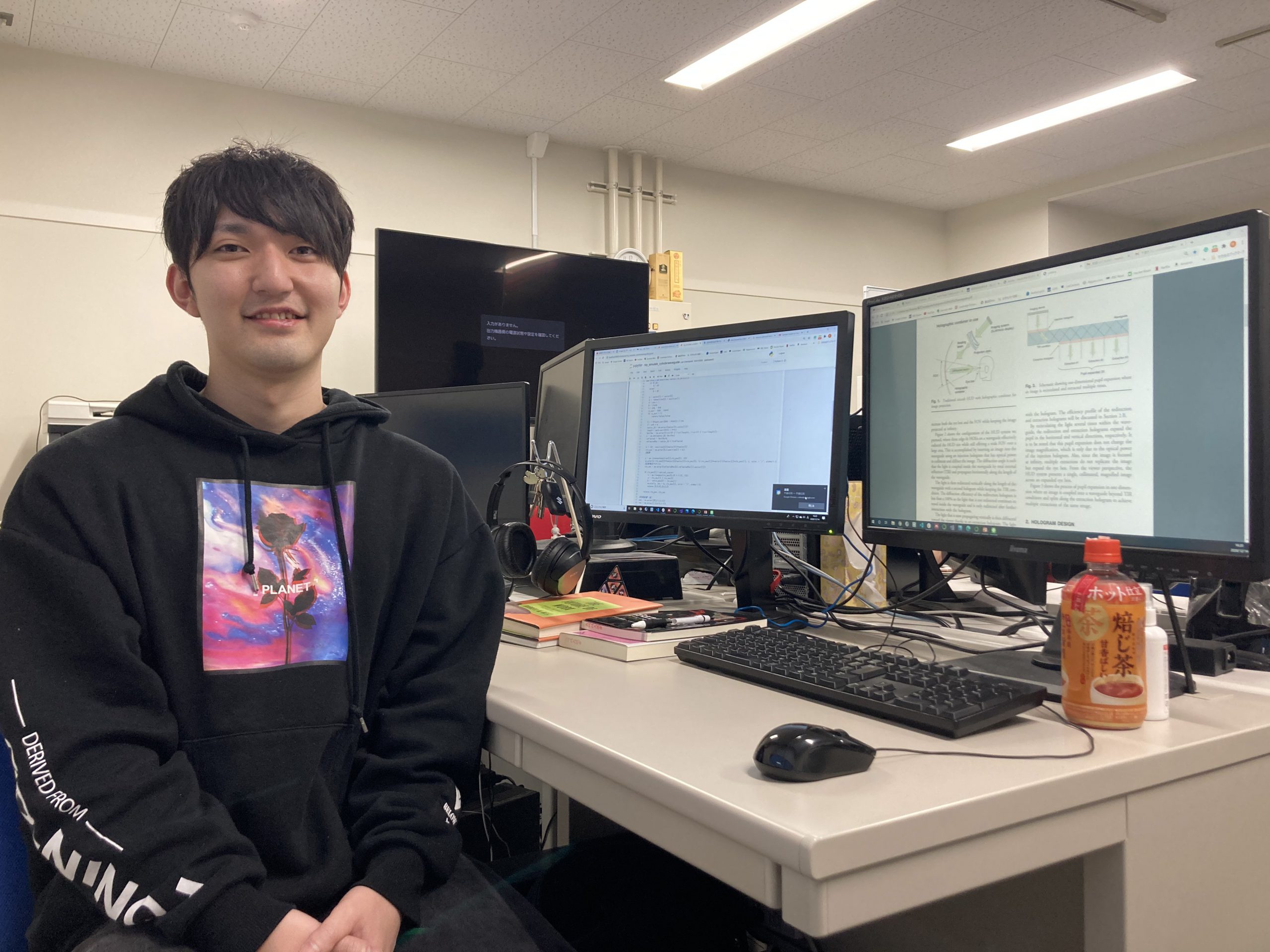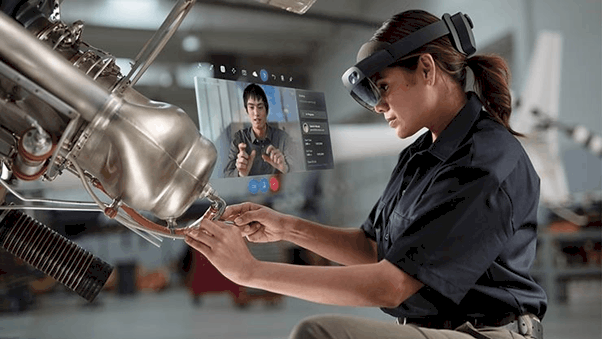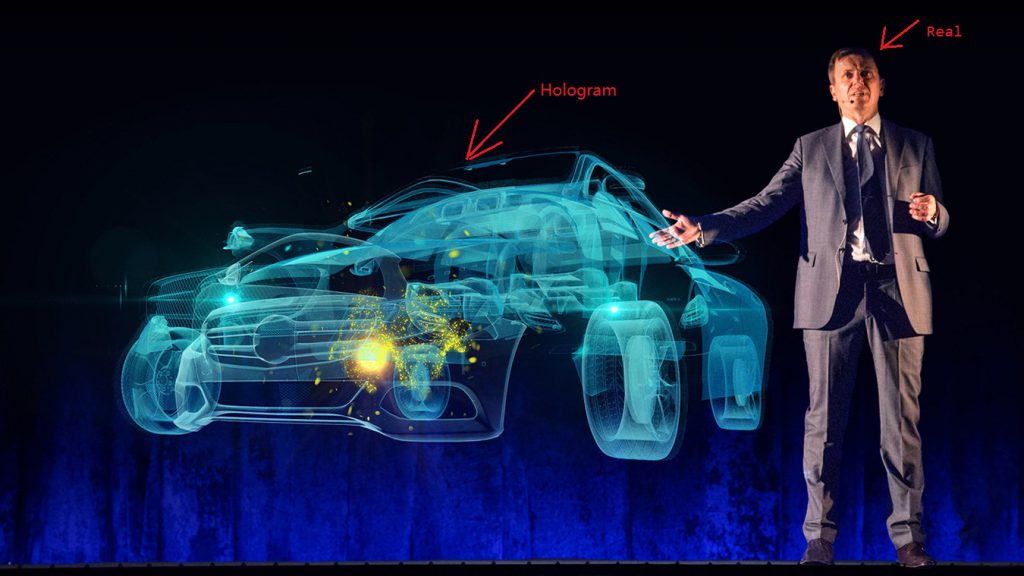Humanity is gradually entering a new development stage; when the past decades’ achievements fade into the background, modern technologies are gaining popularity. And this is not surprising because the innovations allow us to perform the usual actions much faster and make ourselves louder. The global pandemical crisis showed that it is essential to keep up with the times, regardless of occupation or profession.
Reiji Nakashima a master student from Nagaoka University of Technology (NUT) faced the problems of today’s society and believes that the future of communication and meetings lies in a convenient and useful solution – 3D Technology.
“3D Technology is relevant to study because its development can change the world for the better. Today information is presented in multimedia, animation, text, and photographs, and 3D technology is an innovative technology that can be used to create a three-dimensional image”- he said.
Background
Originally from Myoko, Niigata, Reiji Nakashima has been in Nagaoka for almost 4 years. He does not come from the technology or engineering field. However, after graduating from high school, on the recommendation of his teacher, he chose to pursue his studies at the Nagaoka University of Technology, Faculty of Electrical, Electronic and Information Engineering and considers that he made an excellent choice. Being in the last year of his bachelor’s degree, he followed a 5-month internship program (from October 2019 to February 2020) at THine Electronics.
“This program allowed me to see the holographic field from a different angle and to continue my research in this area. Although this technology is not fully studied and not fully implemented, I believe that the 3D technology method will soon become the main data output method and will be used in almost all areas of human life.”

Reiji Nakashima at Nagaoka University of Technology, Niigata
What Exactly is Holography?
The first tried to answer the question “What is a Holography?” was the Hungarian physicist Denesh Gabor in the late 40s. At that time, he was destined to become the founder of holography and the creator of holograms.
For his invention and development of the holographic method, he subsequently received the Nobel Prize in 1971.
“You have probably seen a hologram before in movies such as “Star Wars” and “Iron Man,” online games, or advertisement and know that holography represents a photographic technique that records the light scattered from an object and then presents it in a way that appears three-dimensional. Still, the technology has not quite caught up to its limits— yet.”
“As technology continued to progress, and we had the opportunity to explore new types of systems, holography technology grew rapidly. Various types of holograms have been made over the years, but today one of the most performant is three-dimensional technology.”
In this video, Microsoft demonstrated the usefulness of new 3D Technology that could drastically reduce human communication barriers.
Demo: The magic of AI neural TTS and holograms at Microsoft Inspire 2019 via Microsoft
”COVID-19 changed our perception of life and people. I'm sure that the pandemic will act as a catalyst for trends that were beginning to emerge yet seemed years away, and virtual experiences will become the new normal
Reiji NakashimaStudent, Nagaoka University of Technology
Creating a 3D Technology
In the vision of the greatest innovators of technologies, three-dimensional interface displays are the next step in more human-compatible digital content. 3D Technology will become a common trend shortly, given consumers’ growing demands for new technologies.
Reiji Nakashima says technologies based on 3D holography may conjure up visions of science fiction. Together with Professor Tomohiro Yendo, he aims to make these advanced tools part of everyday life through his research.
“Holograms create true three-dimensional images, which allow the viewer to see an object from all angles. It’s simple: you literally see a real object, which is actually a three-dimensional picture. It can be bypassed, viewed from all angles, and powerful depth that no other 3D display technology can boast.”
“3D Technology can dramatically improve training, design, and visualization in multiple fields, from business to medicine, education, security, communication, and entertainment, because before, all holograms were static.”
“Imagine a three-dimensional image projected in the middle of your conference meetings, floating in mid-air, twisting and turning around. Or a 3D image projected in the middle of your home or office, showing a 3D concept of an object or person that you’re talking about, a three-dimensional image of your parents, friends, or colleagues thousands of miles away from your location.”
So, 3D Technology could become the new reality.
3D Technology is the new reality. Images via Pinterest
The Future Integration
According to Hypervsn report, as 3D holographic visuals grow in the business sector, we can be sure of one thing–development.
“Holograms have the potential to improve dramatically and will become an even bigger part of society. Of course, everyone can see the benefits in their own way, but it’s so fascinating to be connected virtually wherever you are.”
“You could have a virtual audience watching a play or a live event, could also collaborate and work together in an immersive environment or have virtual conferences, you can move around and have access to everything.
”Three-dimensional technology isn’t about just creating life-like images. It's about a connection between reality and new virtual reality; it's about how we see the world
Reiji NakashimaStudent, Nagaoka University of Technology
Student Profile
Reiji Nakashima is passionate about technology and virtual reality. However, he likes to spend his free time with his friends because he believes that any application cannot replace real communication. He speaks English and Japanese and says that this helps him make many friends, discover new cultures, and share his own culture.
The main photo via Pinterest















